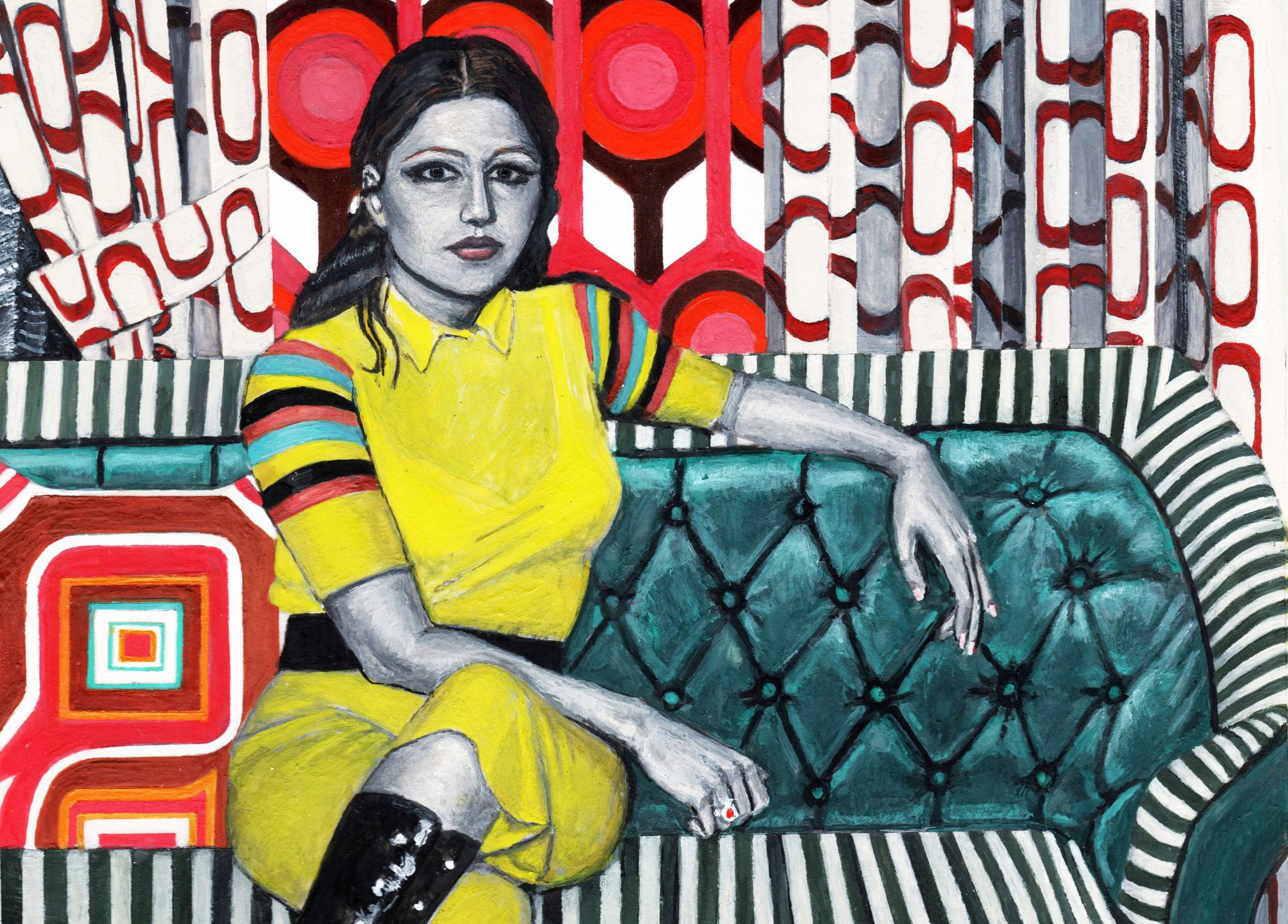As protests continue to shake the nation, artist Soheila Sokhanvari remembers the country’s oppressed idols – and imagines through art other possible futures
On 16 September, 22-year-old Jina Amini (she has been widely reported as Mahsa, a name forced on her by the Iranian government in place of her Kurdish name Jina) was murdered in the custody of Iranian morality police officers, just days after she was arrested for allegedly not complying with hijab regulations. I have been fraught with worry for the women and young girls (many under the age of 18) who have been losing their lives in the ensuing – and ongoing – protests. My thoughts were with their parents too, and the unbearable grief of losing a child, as experienced by the mother of Samira Esmailzadeh, who took her own life after seeing the body of her 16-year-old daughter brutally beaten to death by the authorities.
They say history repeats itself. And this is certainly not the first time that Iranian women have been at this juncture: fighting tooth and nail for the right to live freely in their country; to have sovereignty over their bodies and their lives.

The Iran I left as a teenager in 1978 was a far cry from the country that we see today, particularly for women. Then, Iran’s women had a similar look and role to present day Turkey and women held highflying jobs – in the legal system as judges, as members of the parliament or as celebrated artists like those icons I have painted. My native country froze in time when I left, much as Dublin was seized in the memory of James Joyce in 1904 when he went into exile. And I have clung to this faded image of Iran since coming to England, a country which was alien to me – I didn’t speak the language and was thrust among people who had no knowledge of the rich Persian culture of my home. They saw the image perpetuated in the Western media of Iranian women cloaked in black shrouds – the antithesis of the glamorous idols of my childhood. Since then, I have joined the millions of people in the Iranian diaspora fighting to shatter such stereotypes.
As I put the finishing touches on my project Rebel Rebel this month, history’s habit for repetition only grew clearer. My work began in the autumn of 2019 when curator Eleanor Nairne approached me for Barbican’s Curve gallery – but the seed had been germinating inside me for over forty years. Growing up I was dazzled by the music, films and poetry of these extraordinary women. At that point I didn’t know their stories, or the pain they had had to endure for their art. After the revolution of 1978–9, many of them had been forced into exile or were imprisoned and made to sign letters of ‘repentance’. Their sin: to have been visible women in Iran. As an artist and an Iranian, I was compelled to research their stories so that I could give voice to their silenced lives and speak out against their continued ‘othering’ and oppression. For me, the process of painting them was an act as devotional as it was cathartic.

I chose 28 women to depict in miniature egg-tempera paintings, each of whom had contributed to the feminist struggle in Iran. The first portrait is of Roohangiz Saminejad, who was the first female actor to appear in an Iranian ‘talkie’ called The Lor Girl in 1934; the harassment she suffered for having appeared unveiled was so severe that she changed her name and chose to live the rest of her life in anonymity. The final portrait is of Nosrat Partovi, the last unveiled woman to appear in ‘FilmFarsi’ – her sole film The Deer (1974) was being screened in Abadan’s Cinema Rex in 1978 when Islamic revolutionaries locked the doors and set fire to the building, killing hundreds of people in an event that triggered the revolution.

These women were not just idols to me but to younger generations of women living in Iran today. There is a video circulating online of Amini singing along to the pop-icon Googoosh, who is featured in Rebel Rebel and who was banned from singing for 21 years until she left Iran to resume her career abroad. There is always an alternative view to the histories written by power and oppression; I wanted visitors to drink it in, to feel invigorated, to imagine through art other possible futures for the country ahead. The women depicted in my exhibition are the grandmothers and great-grandmothers of the generation risking their lives on the streets of Iran today. They all reveal to us the extraordinary tenacity rooted in Iranian women, and flood me with confidence that we will, eventually, prevail.
